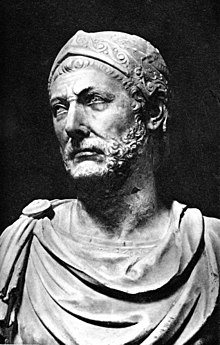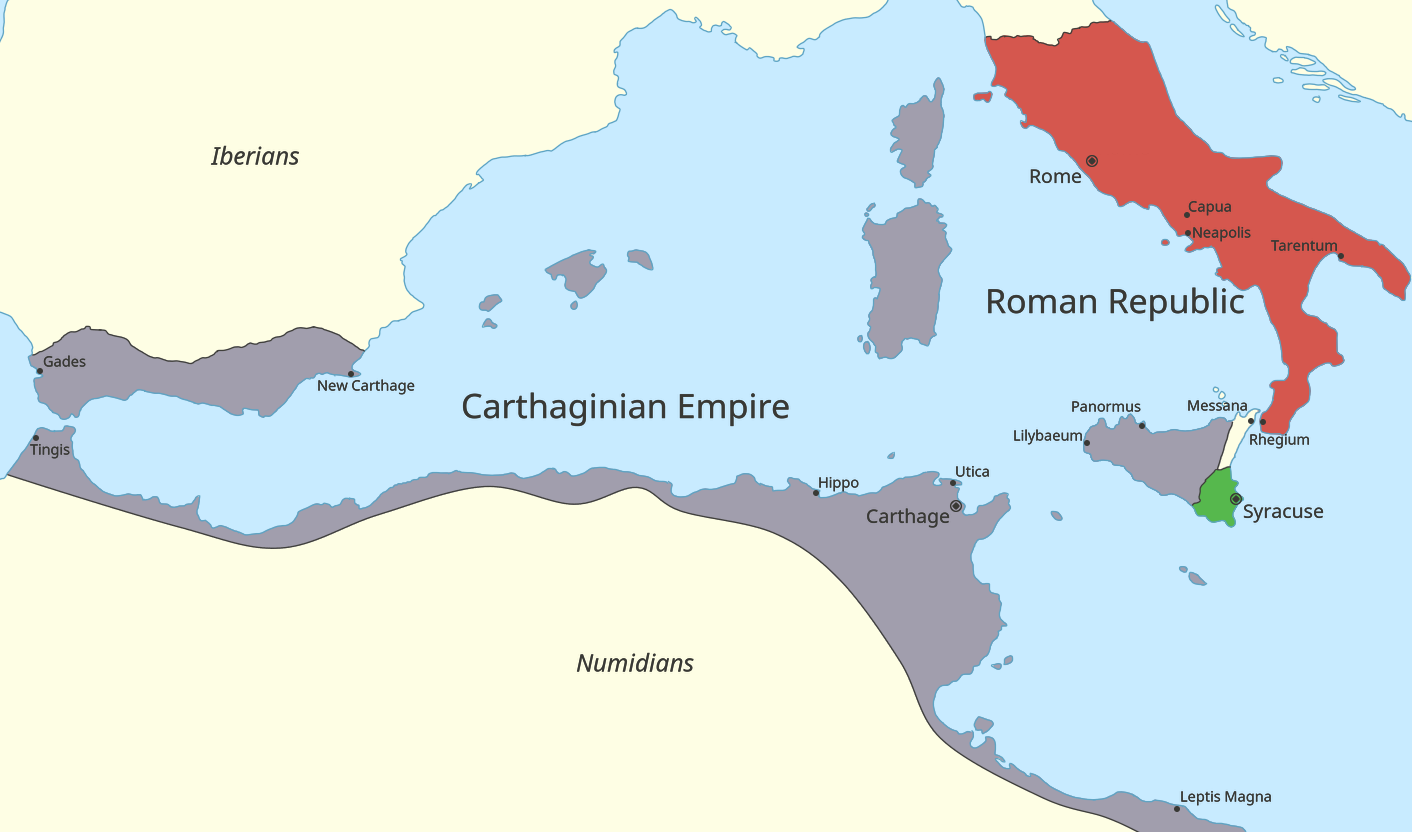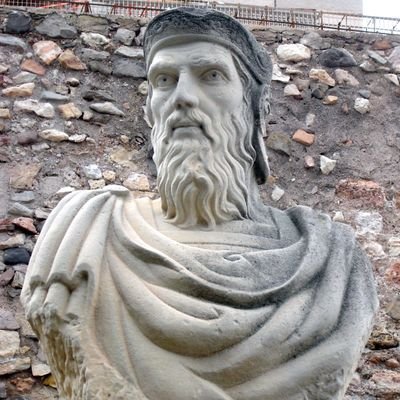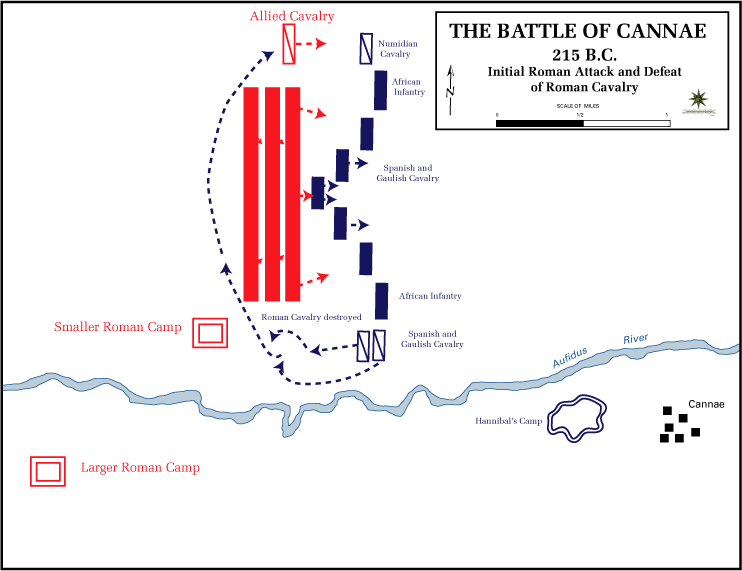
Hannibal
From his first breath a warrior, Hannibal is born in 247 BC in what is present day northern Tunisia during the tumultuous period of time in which his home country of Carthage is vying for control of the western Mediterranean with the Republic of Rome. A member of the family of politician and general, Hamilcar Barca, one of the few bright lights in Carthage's loss of the First Punic War (23 years in length, the longest conflict of antiquity and greatest naval war, with the Treaty of Lutatius the Carthaginians are forced to leave the strategic island of Sicily and let Rome annex it as a province, release all Roman prisoners, and pay an indemnity of 3,200 gold talents to Rome over ten years), his two younger brothers, Hasdrubal and Mago, will both become generals in the fight against Rome, and his brother-in-laws are Hasdrubal the Fair and King Naravas of Numidia, both military commanders. Trying to recover from the loss to Rome, Hannibal is with his father when Hamilcar takes an army across the Strait of Gilbrator and begins subjugating what is now southern Spain ... but not before the youngster tells his father before a roaring fire in a sacrificial chamber in the town of Peniscola, "I swear so soon as my age will permit ... I will use fire and steel to arrest the destiny of Rome!" ... a vow the general will spend the rest of his life towards achieving. Campaigning with his father, eight years later, Hannibal (now 18) supports the efforts of Hasdrubal the Fair as an officer when his brother-in-law takes command of the Carthaginian army following the drowning death of Hamilcar during the general's siege of Helike in 228 BC. Hannibal is 26-years-old when Hasdrubal is assassinated by an irate slave avenging his dead master, the Celtic King Tagus, and command of the army is given to the young man (the appointment is confirmed by the Carthaginian government). Consolidating his Iberian base, in 219 BC, Hannibal starts the Second Punic War (also known as The Hannibalic War and The War Against Hannibal) by taking the pro-Roman Iberian port of Saguntum with an army of 15,000.

Ancient Playing Field
Hamilcar Barca

Hasdrubal The Fair
Military genius on display almost immediately, naval war a failure in the First Punic War, consolidating the plans of his father, Hamilcar and his brother-in-law, Hasdrubal, with his own ingenuity, Hannibal's first feat in May of 218 BC is an accomplishment believed to be an impossibility by the Romans ... leaving his base at New Carthage, Hannibal, at the head of an army of over 50,000 men (and a group of war elephants) campaigns through four Iberian tribes (the Illergetes, the Bargusii, the Aeronosii, and the Andosini), crosses the Pyrenee Mountains, marches to Rhone River, bests a force of Gauls trying to block his advance across the river, avoids a Roman army sent to stop him, crosses the Alps over its highest pass, Col de la Traversette (9,669 feet above sea level while fighting off the locals), and descends into Italy's Po Valley. Bringing the war to Rome, in December of 218 BC, Hannibal, at the head of 40,000 soldiers, fights the first major battle of the new conflict along the left bank of the Trebbia River near the town of Placentia (matched against the Carthaginians is a Roman army of 40,000 men under the direction of Consul Tiberius Sempronius Longus). The first disastrous clash of the Romans against Hannibal, the Battle of Trebbia features an impetuous forward thrust by the Romans that is turned into an entrapment when a hidden force of Carthaginians commanded by the general's brother, Mago, falls on the Roman rear. In the sword and lance chaos that ensues, only 10,000 Romans escape to fight Hannibal again on another day.
Crossing The Alps

Trebbia
Reorganizing to face the menace to their north, in 217 BC, the Romans elect Consul Gnaeus Servilius Geminus to take over the command of the legions being directed by Publius Cornelius Scipio and Consul Gaius Flaminius to rebuild and direct what remains of the army defeated at Trebbia ... a formidable force if the operations of the two consuls can be coordinated. Reacting to the changes, Hannibal draws Flaminius out of his camp before Geminus arrives in the area and next meets the Romans along the shores of Lake Trasimene (a body of water in the Umbria region of Italy on the border of what is now Tuscany). More butchery for the Romans, Hannibal uses the lake, forested hills of Mt. Cortona for hiding the actual location of his troops (and fake campfires to persuade the Romans that the Carthaginians are further away than they actually are), and the single road through the area results in another massacre in which 15,000 Romans perish by way of the sword (among the dead is Flaminius himself, who has his head separated from his body) or drowning in the lake and another 15,000 soldiers are captured and become slaves. And the end of the battle doesn't stop the blood letting ... sent on to help their fellow Romans, a force of 4,000 soldiers commanded by Propraetor Gaius Centenius is intercepted and destroyed. Panic ensues in Rome, and in the tumult, the Roman assembly elects Quintus Fabius Maximus Verrucosus as dictator and puts a policy into effect of staying out of pitched battles with Hannibal ... a decision that allows the Carthaginians to rampage through the Apulia region of Italy while Rome tries to regain its strength. A year of mayhem in the countryside finally causes the Roman Assembly to remove Verrucosus, and elected as consuls, Lucius Aemilius Paullus and Gaius Terentius Varro to alternately command a new Roman army of almost 90,000 men ... their orders are to eliminate Hannibal. And so the stage is set for Cannae.

The Beheading Of Flaminius
Seizing the initiative, in the spring of 216 BC, Hannibal (now at the head of an army of 50,000 men) takes the large Roman supply depot located on the Apulian plain at Cannae; a move that places the Carthaginians between Rome and critical source of supplies. Resolving that the loss can not stand and Hannibal must be confronted, the consuls and their legions march south in search of the invaders and two days later they find the Carthaginians camped on the left bank of the Aufidus River. Crafty to a fault, Hannibal allows the Romans to push through a small ambush that instills a sense of overconfidence in the Romans, sets up camp, and then waits for the impetuous Varro (outnumbered in cavalry and more cautious then his partner, Paullus does not want to fight Hannibal on open ground) to assume the Roman command. And trying to give himself every advantage in the coming battle, Hannibal insures that a good portion of the troops he will be facing will be thirsty, he harasses the small Roman camp responsible for providing their army with water from the Aufidus. Plans made, setting up for battle the next morning, Hannibal cracks a joke to an officer named Cisgo about there being no one named Cisgo in the Roman army before them that causes laughter to ripple through his entire camp, positions his units based on their strengths and weaknesses (he will be with the infantry in the center, while his brother Hasdrubal commands the Spanish and Gallic cavalry on the left, while on the right, Hanno Bomilcar directs the Numidian horsemen) and selects a site for the battle that will force the thirsty Romans to attack east, up a hill with the sun in their eyes and a southwest wind blowing sand and dust in their faces.

Set Up

What Will Be
Hannibal's greatest victory begins with twin cavalry battles on the flanks in which Hasdrubal first destroys the Roman horsemen on his side of the field, then takes his command to the other side of the field to join with the Numidian riders in shattering the rest of the Roman riders. As the cavalry clashes are taking place, the infantry of the two armies march forward and begin battling, with Varro trying to crack the Carthaginian line with his numerically superior force as Hannibal's straight line of advance is pressured into a semicircle crescent ... as planned by Hannibal! Slowly forced backwards as the Romans pour more and more men into the center of the battle, Varro suddenly finds himself with no where to go as his force suffers an encirclement in which his rear is assailed by Hannibal's horsemen, uncommitted African troops hit both his flanks, and Hannibal center infantry halts its feigned retreat and attacks forward. A four hour debacle of carnage, depending on the historian cited, the Romans will lose roughly 50,000 men (it is estimated by historian Victor Davis Hanson that six hundred legionnaires die each minute of the encirclement until darkness halts the butchery) and have 19,000 taken prisoner (stationed in camps in the region, about 14,000 Romans are not part of the battle survive the day) at a cost of 5,700 Carthaginians being killed. Decimated, the Roman dead includes 2 quaestors, 29 of 48 military tribunes (a number that includes Gnaeus Servilus Geminus and Marcus Minucius Rufus), and 80 senators (30% of Rome's governing body) ... and the man that didn't want to fight Hannibal in the open, the next day's commander if there was a next day, Consul Paullus (the fool who kept advancing, Varro somehow escapes the blood bath his generalship has brought on). The victory is one of the single most lethal days of fighting in human history!
The Battle Of Cannae
Trapped

Slaughter
A victory that might have won the war, in three seasons of campaigning in Italy, Hannibal has eliminated one-fifth of Rome's male population over the age of seventeen, and in the panic that takes place after Cannae, the Romans declare a national day of mourning, ask for help from their gods by sacrificing two people at the Forum of Rome (they are buried alive) and throwing a baby into the Adriatic Sea. Though beaten, the Romans though refuse to sue for peace and though some of their allies flip allegiance after the battle, Hannibal does not have the siege equipment necessary to attack the city of Rome (a situation Carthage does nothing about) and spends the next decade attacking and burning portions of Italy while the Romans pin prick his force until the general is recalled home. There, a resurgent Rome, now fielding an army of 35,000 soldiers under the command of Consul Publius Cornelius Scipio (who becomes Scipio Africanus to history) will finally defeat Hannibal in Northern Africa at the Battle of Zama (with a major assist coming from King Masinissa of Numidia changing sides at a most importune time for the Carthaginians) in 202 BC. Exiled after the defeat and on the run from the revenge motivated Romans, it is believed that the general does himself in with poison in 181 BC after a force of Romans finds him in Bithynia and surrounds the castle he has been hiding at.

Scipio
/battle-of-zama-57e158965f9b586516d78c44.jpg)
Zama
Time a great modifier, despite the passage of thousands of years, Hannibal's victory at Cannae remains one of the most important battles in history ... Hannibal is given a chance to win the Second Punic War, Roman military doctrine is changed as to how the legions are organized, maneuver, and are commanded (no more every-other-day change nonsense), changes that allow Rome to dominate the ancient world for centuries to come, and it is still studied by modern commanders such as Frederick the Great, Field Marshal Helmuth von Moltke, Count Alfred von Schlieffen, General of the Army Dwight David Eisenhower, and General Norman Schwarzkopf Jr. that seek to learn and emulate Hannibal's leadership abilities and tactical superiority over his foes.

Modern Monument At The Site Of The
Ancient Battle
8/2/216 BC ... the Battle of Cannae takes place in ancient Italy.

Cannae .
No comments:
Post a Comment